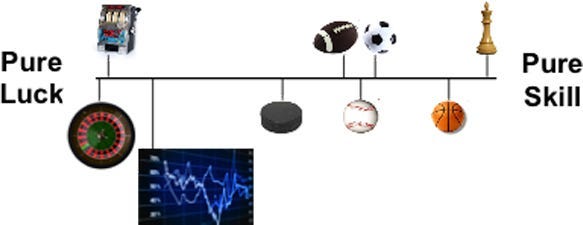Case Study: Inside The Anatomy Of A Viral Video Clip
On Monday at 7:00am EST, I posted the following video clip of Viktor Frankl on LinkedIn. The 1972 speech poetically explains why being idealistic about for who someone can become should always trump the realism of who they are now…
As I write this a day later, 2,000+ people have liked the post…
Viral content that resonates so much that people share it is rare and special. It’s a combination of luck, and it’s a combination of skill. Similar to baseball.

In this post, I share the specific actions I took that determined how I found, packaged, and posted the clip so that you can learn my system.
But, first, it’s key to understand that…
Virality Is A Superpower
We live in an amazing world where a resonant idea can literally reach stadiums full of people within a day—for free. Even more amazing, we can do this without a large following.
I don’t take this sort of attention for granted.
More than the 2,000+ likes, I think about the 130,906.2 minutes people spent watching the video. More so, I think about all these viewers getting inspired to see the best in other people, because of Viktor Frankl’s message.
Put simply, viral ideas change the world. They change culture. Determine elections. Even cause wars. In other words, although words can seem ephemeral, their impact is anything but that.
I also appreciate virality, because it’s how I got my start…
Virality Is A Learnable System
When I first started seriously writing in 2013 for Forbes, I didn’t have an audience to share my articles with, money to pay for ads, or a network of people to promote my content. So, I decided to study the craft of virality with the hope that the little promotion I got from Forbes would kickstart enough virality that more people would see the posts. In other words, I learned about virality because I had no other choice.
Over time, what seemed like a blackbox at first became a system I could replicate. Granted, it drastically increased my odds, but viral hits are like baseball. Big hits are rare even for the pros.
With that said, here are the five specific steps I took and my logic behind each one…
Look for video clips related to ideas you’re developing
Be willing to look into the past for historic clips
Go down rabbit holes 20% of the time
Respond to the feedback like you’re playing Battleship
Strike while the iron is hot
Here’s the deep breakdown on each step…


